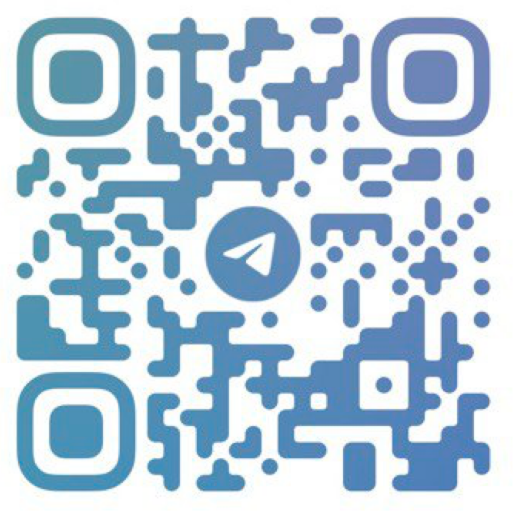Exploring the Emerging Horizons of Blockchain Interoperability through Cross-Chain Technology
Exploring the Emerging Horizons of Blockchain Interoperability through Cross-Chain Technology
Introduction
As blockchain technology continues to evolve and find widespread application across various domains, the challenge of achieving seamless interoperability between different blockchains has arisen. This is where cross-chain technology comes into play. This article delves into the core definition and workings of cross-chain technology, highlighting its potential to not only expand the boundaries of blockchain applications but also foster a more collaborative blockchain ecosystem in the future.

Introduction to Cross-Chain Technology
Cross-Chain Technology Overview: Cross-chain technology is a solution designed to connect disparate blockchain networks, enabling them to communicate and collaborate. Within the current blockchain ecosystem, numerous standalone blockchain networks exist, each with its own data structure, consensus mechanisms, and rules. However, this isolation also presents limitations that hinder asset transfers, information sharing, and collaborative development across different chains. This underscores the crucial importance of cross-chain technology.
The limitations of traditional single-chain networks stem from their isolated nature, making it difficult for assets to flow between different chains and impeding the exchange of data, thereby constraining the interoperability of applications. Cross-chain technology, as a solution, has the capacity to overcome these barriers and establish seamless connections across multiple chains. Through cross-chain technology, distinct blockchain networks can achieve asset transfers across chains, real-time data sharing, and more efficient cooperation.
Solutions for cross-chain technology include the establishment of cross-chain bridges, introduction of relay chains, and implementation of atomic swaps, among other approaches. These methods facilitate the transmission of data and value between different chains, thereby ensuring asset compatibility and collaborative application potential. By incorporating cross-chain technology, the blockchain ecosystem can further expand, enabling enhanced collaboration between different chains that, in turn, opens up broader avenues for innovative applications and business models.
In conclusion, cross-chain technology serves as a bridge connecting diverse blockchain networks, eliminating barriers between chains and enabling a more cohesive and efficient operation of the blockchain ecosystem. This, in turn, lays the foundation for a future rich with possibilities for blockchain applications.
Cross-Chain Principles and Techniques
Cross-Chain Principles and Techniques: Cross-chain technology employs several methods, including sidechains, atomic swaps, and relay chains, all designed to facilitate data and value transfer between different blockchains.
Sidechains: A sidechain is a parallel blockchain that operates alongside the main blockchain and enables assets to move between the main chain and the sidechain. By locking assets on the main chain and generating corresponding tokens on the sidechain, assets can be used within the sidechain and subsequently returned to the main chain. This ensures the security and compatibility of assets.
Atomic Swaps: Atomic swaps enable direct asset exchanges between different blockchains without the need for a trusted third party. These exchanges are either executed or not, eliminating the possibility of deception. Using smart contracts and locking mechanisms, atomic swaps ensure simultaneous asset transfers upon meeting specific conditions.
Relay Chains: Relay chains act as intermediary chains that connect different blockchains, facilitating the transmission of data and value. They receive data from various chains and relay it between chains to ensure data consistency. Through consensus algorithms, relay chains guarantee data accuracy and reliability.
In essence, the various methods of cross-chain technology aim to address interoperability challenges between different blockchains. Through these methods, different chains can transmit assets and data, thereby expanding the potential applications of blockchain technology.
Challenges and Solutions in Cross-Chain Technology
Challenges and Solutions in Cross-Chain Technology:
Challenges:
Security Concerns: Ensuring the security of assets and the credibility of transactions during cross-chain interactions is a significant challenge. Different chains may possess varying security standards and consensus mechanisms, potentially leading to risks of attacks and asset loss.
Mismatched Consensus: Different blockchains may employ diverse consensus algorithms, leading to a lack of consensus compatibility during cross-chain interactions, potentially resulting in incomplete transactions or inconsistencies.
Data Communication Issues: Cross-chain interactions require the transmission of data between different chains, and data communication may be affected by delays, congestion, or data loss, thereby impacting transaction reliability.
Solutions:
Cross-Chain Standardization: Industry-wide adoption of uniform cross-chain standards can address security concerns. This approach ensures that interactions between different chains adhere to consistent security protocols and rules, thereby reducing the risk of attacks.
Construction of Cross-Chain Bridges: Building cross-chain bridges facilitates the seamless transfer of assets between different chains. Constructing these bridges enables asset locking and release between chains, thus resolving consensus mismatch challenges.
Use of Relay Chains: Relay chains can serve as intermediary layers for cross-chain interactions, coordinating the transmission of data between different chains. They ensure data accuracy through consensus mechanisms, minimizing data communication issues.
Encryption Technology and Smart Contracts: Advanced encryption technology and smart contracts enhance the security of cross-chain transactions. Smart contracts ensure the consistency of transaction conditions, while encryption technology safeguards data confidentiality.
By adopting these solutions, the blockchain ecosystem can overcome challenges associated with cross-chain technology, resulting in secure, efficient, and interoperable cross-chain interactions.
Real-World Applications
- Decentralized Exchanges (DEXs): DEXs exemplify successful cross-chain applications. They enable users to trade assets across different blockchains, such as Ethereum and Bitcoin. Through smart contracts and cross-chain bridges, users can exchange assets between chains without relying on intermediaries.
- Cross-Chain Asset Transfers: Cross-chain asset transfers involve moving assets from one blockchain to another. For instance, transferring tokens from Ethereum to the Polkadot network. Through relay chains or cross-chain bridges, asset locking and release can be coordinated between different chains, enabling seamless asset transfers.
These examples demonstrate the successful application of cross-chain technology. Leveraging cross-chain standardization, smart contracts, and dedicated cross-chain infrastructure, these applications facilitate seamless value transfer across different blockchains.
The Future Prospects of Cross-Chain Technology
As the blockchain ecosystem continues to expand and evolve, cross-chain technology will maintain its pivotal role, exerting a significant influence on the blockchain ecosystem.
Enhancing Interoperability: Cross-chain technology will further extend interoperability between different blockchains, allowing assets and data to flow more freely. This will create increased opportunities for innovation and novel use cases.
Empowering Decentralized Finance (DeFi): DeFi stands to benefit from cross-chain technology, with cross-chain interoperability enabling DeFi protocols to transcend different chains, thereby fostering wider asset participation and comprehensive financial services.
Cross-Chain Digital Identity and Supply Chain Management: Cross-chain technology can be employed to establish cross-chain digital identity systems, enhancing data sharing between individuals and businesses. Additionally, it can enhance supply chain management by enabling transparency and traceability on a global scale.
Cross-Chain Gaming and Virtual Asset Trading: Cross-chain technology has the potential to drive the development of cross-chain gaming and virtual asset trading. Different blockchain games can facilitate the exchange of in-game items and virtual assets across chains, offering enhanced possibilities for players.
Cross-Chain Smart Contract Ecosystem: Cross-chain smart contracts can connect diverse applications and services, generating complex logic and scenarios. This will support innovative business models and applications.
Cross-chain technology will continue to shape the development of the blockchain ecosystem in the future. By offering greater interoperability, expanded financial services, secure digital identity, transparent supply chains, and innovation in entertainment and gaming, cross-chain technology will propel blockchain technology towards broader applications. As cross-chain technology continues to evolve, new innovative application domains will continue to emerge.
Conclusion
Cross-chain technology plays a crucial role in addressing the interoperability challenges within the blockchain network. By employing methods such as sidechains, atomic swaps, and relay chains, cross-chain technology facilitates seamless data and value flow between diverse blockchain networks. It not only serves as a solution to current interoperability barriers but also lays the foundation for a more robust and interconnected blockchain ecosystem. Looking ahead, cross-chain technology will foster innovation across various domains, including decentralized finance, digital identity, and supply chain management.

Please specify source if reproducedExploring the Emerging Horizons of Blockchain Interoperability through Cross-Chain Technology | CoinNav- Blockchain Trading Starts Here

